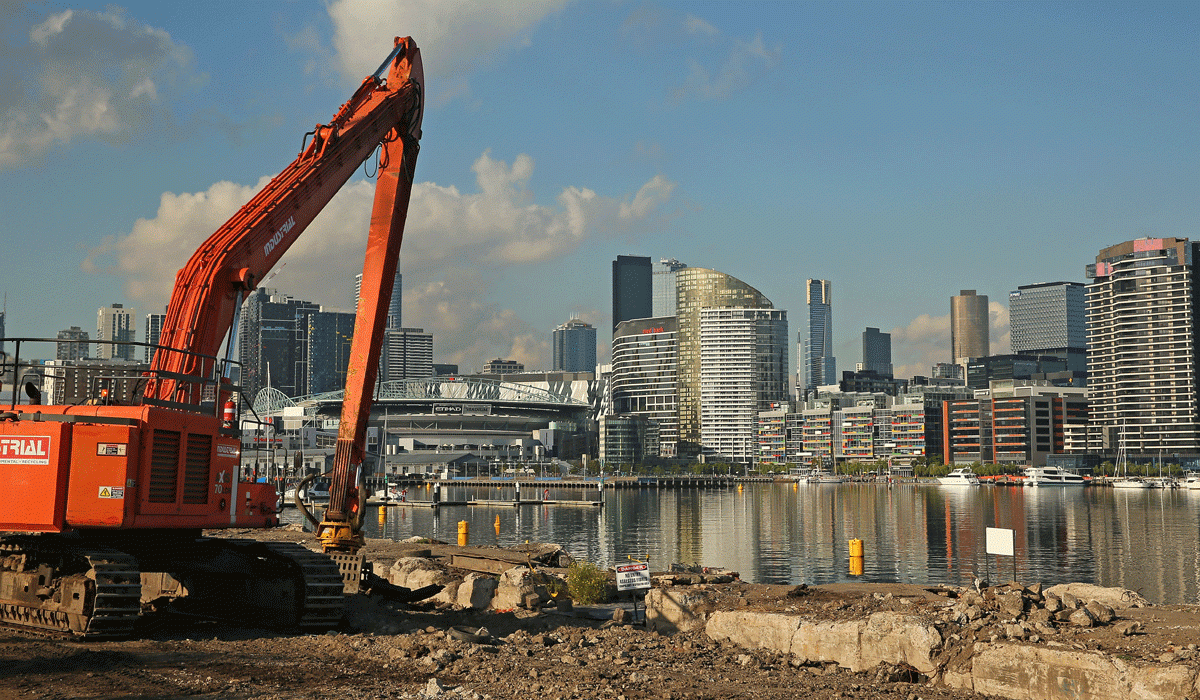New home building approvals at lowest levels in nearly six years


The number of new apartments being built has nearly halved over the past year. Photo: Getty
The number of new homes being built has fallen to its lowest level in more than five years, Australian Bureau of Statistics figures reveal.
The number of new home building approvals fell 24.7 per cent, in trend terms, in the 12 months to December 2018, data released by the ABS on Monday shows.
The number of new homes in the construction pipeline is at its lowest level since June 2013, almost 40 per cent below the cycle peak of November 2017.
“The trend for the total dwelling approvals series has continued to decline over the past year,” ABS director of construction statistics Daniel Rossi said.
Apartment boom over
The troubled apartment sector led the falls, with a staggering 41.2 per cent annual decline in the number of new units approved to be built in the year to December 2018.
The volume of new apartment building is now smaller than at any time since July 2012.
The number of detached houses being built fell by 9.4 per cent in the same period, the figures show.
In monthly terms, the number of building approvals for dwellings fell by 4.1 in December, with a total of 14,875 new homes approved in the final month of 2018.
Among the states and territories, dwelling approvals fell in December in the Australian Capital Territory (21.3 per cent), Queensland (6.5 per cent), New South Wales (5.0 per cent), Western Australia (3.8 per cent), South Australia (1.5 per cent) and Victoria (1.4 per cent) in trend terms.
The Northern Territory (1.7 per cent) and Tasmania (1.1 per cent) recorded increases.
Home building data deals blow to the economy
The dire building data dealt a blow to Australia’s already weakened economic outlook.
The Aussie dollar faltered on the back of the figures, adding more impetus to speculation about a cut in interest rates.
The dollar eased slightly to 72.42 US cents and away from last week’s two-month peak of 72.95 US cents.
Sliding home prices and tighter lending rules by banks looked to have hit the high-rise sector particularly hard, with the market bracing for further fallout from Monday’s release of the banking royal commission report.
“Approvals are now signalling an unambiguous further weakening that will clearly see declining new dwelling investment detract from Australia’s growth in 2019,” Westpac senior economist Matthew Hassan said.
He expects new dwelling investment to decline 8 per cent this year, with a further 5 per cent contraction in 2020.
That would be unwelcome news to the Reserve Bank as it holds the first policy meeting of the year on Tuesday. It was already expected to have to trim its upbeat forecasts for economic growth and inflation.
Figures for retail sales are also due on Tuesday and are forecast to show a drop of 0.1 per cent in December, as consumers turned cautious after a spending big on online sales in November.
Futures markets imply about a 50-50 chance the RBA will have to cut the 1.5 per cent cash rate by the end of the year, despite its repeated assertions that the next move would be up.
The data helped bonds pare some of the losses suffered in the wake of strong US jobs numbers.
The Australian three-year bond contract was just half a tick lower at 98.275, while the 10-year contract dipped two ticks to 97.7750.
-With AAP








